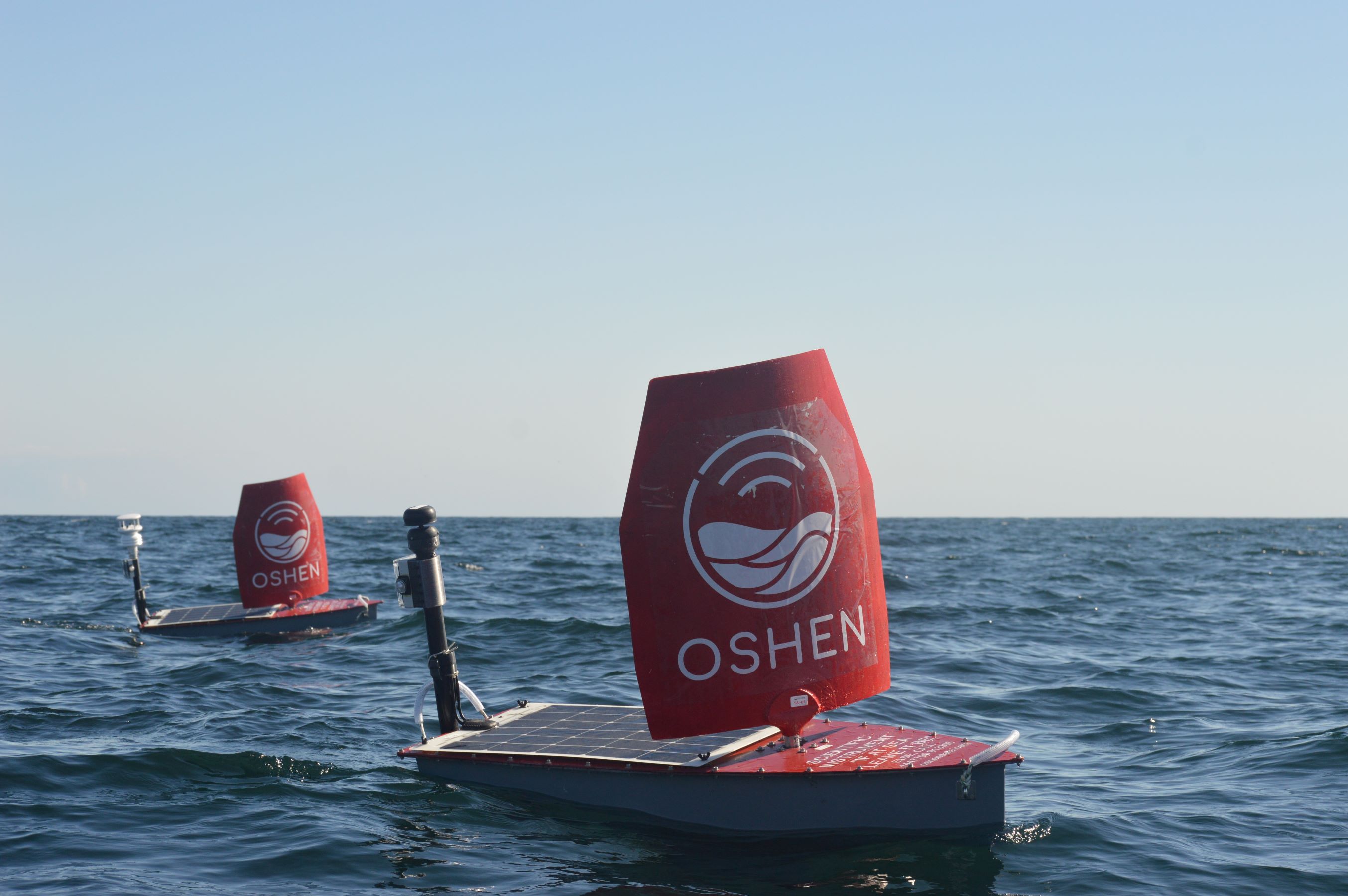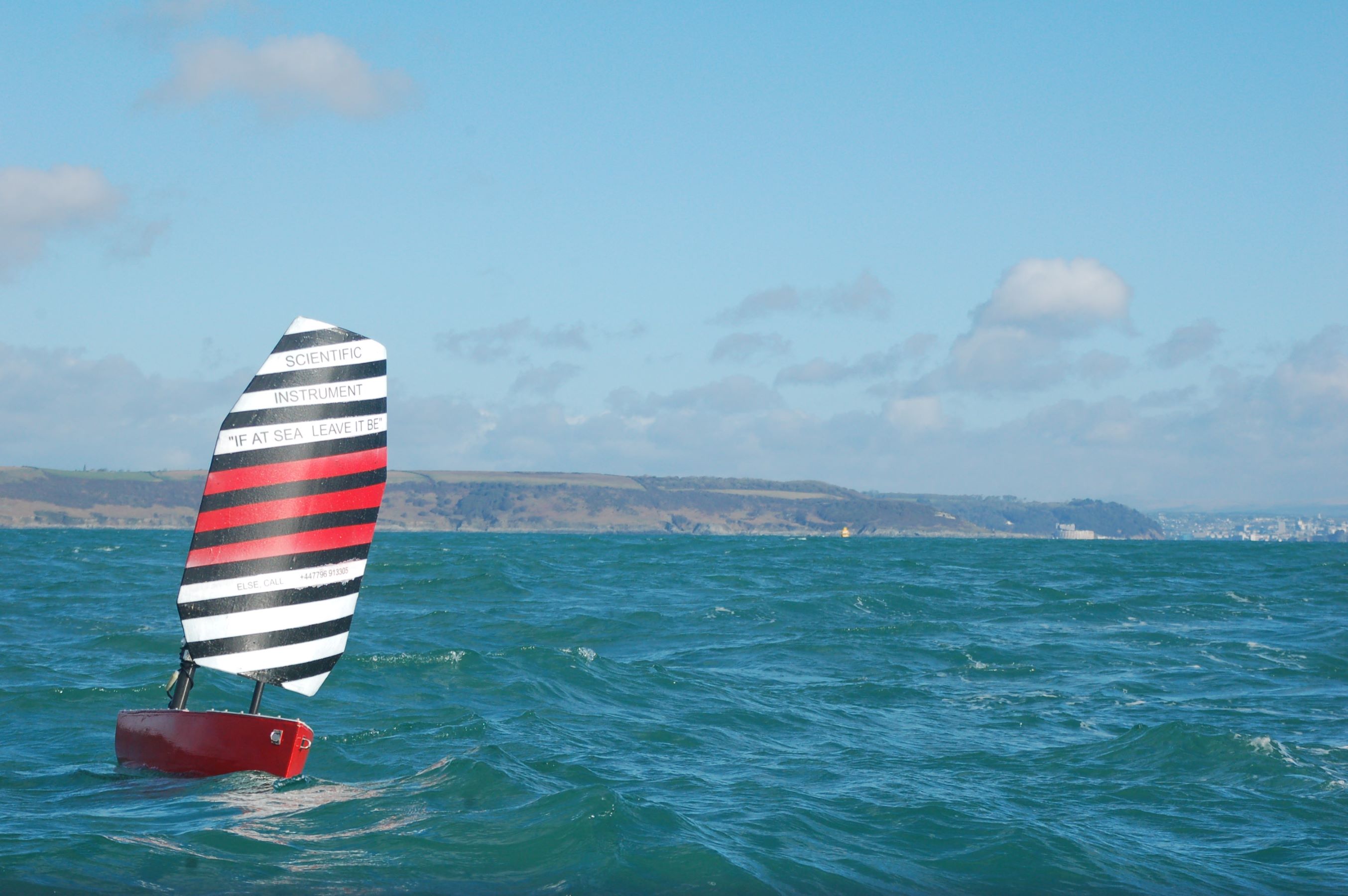With climate data more important than ever, is there a way to maximise marine data collection, gathering even more information from all oceans?
At the Met Office we’re no stranger to marine data collection. We maintain a network of 11 moored buoys around the UK, equipped with advanced sensors that collect vital meteorological and oceanographic data. These observations are essential for weather forecasting and storm warnings, climate monitoring, assessment of long-term change in the ocean, and scientific research. But is there a way to collect even more information from our oceans?
Storm-ready robots
A Plymouth-based startup, Oshen, is attempting just that. Their flagship technology is a constellation of autonomous marine craft known as C-Stars. Each one-metre-long robot is capable of sailing independently for months at a time, either keeping station, or travelling hundreds of miles across the world’s oceans.
Controlled by human-in-the-loop AI, each robot is proven to withstand storm force winds and 8-metre-high waves. They require no maintenance, can be positioned rapidly, and offer the potential to address gaps in ocean surface data. Unlike other autonomous sea-monitoring robots, they’re wind-driven and uniquely small. This reduces the reliance on solar or battery power and means that constellations can be deployed to cover a wide area. C-Stars offer the potential to supplement and complement data gathered from satellites and static buoys, expanding the quantity of climate data readily available.
 Photos: Jake Lewis
Photos: Jake Lewis
Oshen’s CEO, Anahita Laverack, is confident that the company is set to make a difference: “Our C-Stars are the future for long term ocean monitoring - swarms of small robots pinging back data 24/7 around the world’s oceans. Constellations of C-Stars have already been used for hurricane monitoring in the US, and a 50-strong constellation is funded for the Atlantic Ocean.
“70% of our planet is covered by oceans, and as a result they play a huge role in our weather and climate systems. Despite this, we collect very little live data from the ocean surface, and this holds us back on so many important frontiers; including climate research.”
In fact, last month the C-stars become the first uncrewed surface vehicle to successfully capture and transmit data from the heart of Category 5 Hurricane Humberto. The C-Stars reported back live data every 2 minutes, including temperature, humidity and a low pressure of 955 millibars.
Innovation in action
How has the Met Office supported this exciting innovation? As well as providing guidance on data quality for future missions, in 2024, the Met Office verified the performance of a fleet that had gathered data from a particular storm.
Our observations research and development (R&D) team ran studies on the data, comparing it to existing forecast outputs and assessing the quality of the observations and models. The comparisons between measured and modelled parameters were excellent, showing real promise.
In February this year, it was announced that Oshen will undertake a £2 million project funded by the Advanced Research and Inventions Agency (ARIA) under the Forecasting Tipping Points Program. The project involves the deployment of a 50-strong fleet of robots, to create unique early warning system in the North Atlantic Sub Polar Gyre, a large system of ocean currents that plays a crucial role in regulating climate, ocean circulation, and marine ecosystems.
Why ocean data matters more than ever
Despite remarkable advances in satellite technology, there are significant challenges in our ability to measure the state of our oceans. The State of the UK Climate 2024 report highlights how the UK’s climate is warming at a rate of around 0.25°C per decade, with sea levels rising by up to 19.5cm since 1901. These changes are already impacting weather patterns, ecosystems, and coastal communities.
To understand and respond to these changes, we need more data. The more data we have, the better equipped we are to forecast, adapt, and mitigate.
Evolution for the future of climate science
As climate change accelerates, so too must our ability to observe and understand it. That’s why the Met Office continues to work with cutting-edge technology, including our new supercomputer, which will enable faster, more detailed climate simulations and support the next generation of environmental science.
Through the UNESCO/WMO 10,000 Ship initiative, we’re also calling on the shipping industry to help us by adding more weather sensors on their vessels to collect vital data from our oceans. And, as well as our climate research, we’re supporting innovative ideas like the C-Stars.
So could ocean robots be the next big thing in climate monitoring? With scalable, autonomous platforms like Oshen’s C-Stars and other autonomous ocean robot endeavours, the potential is certainly there.



